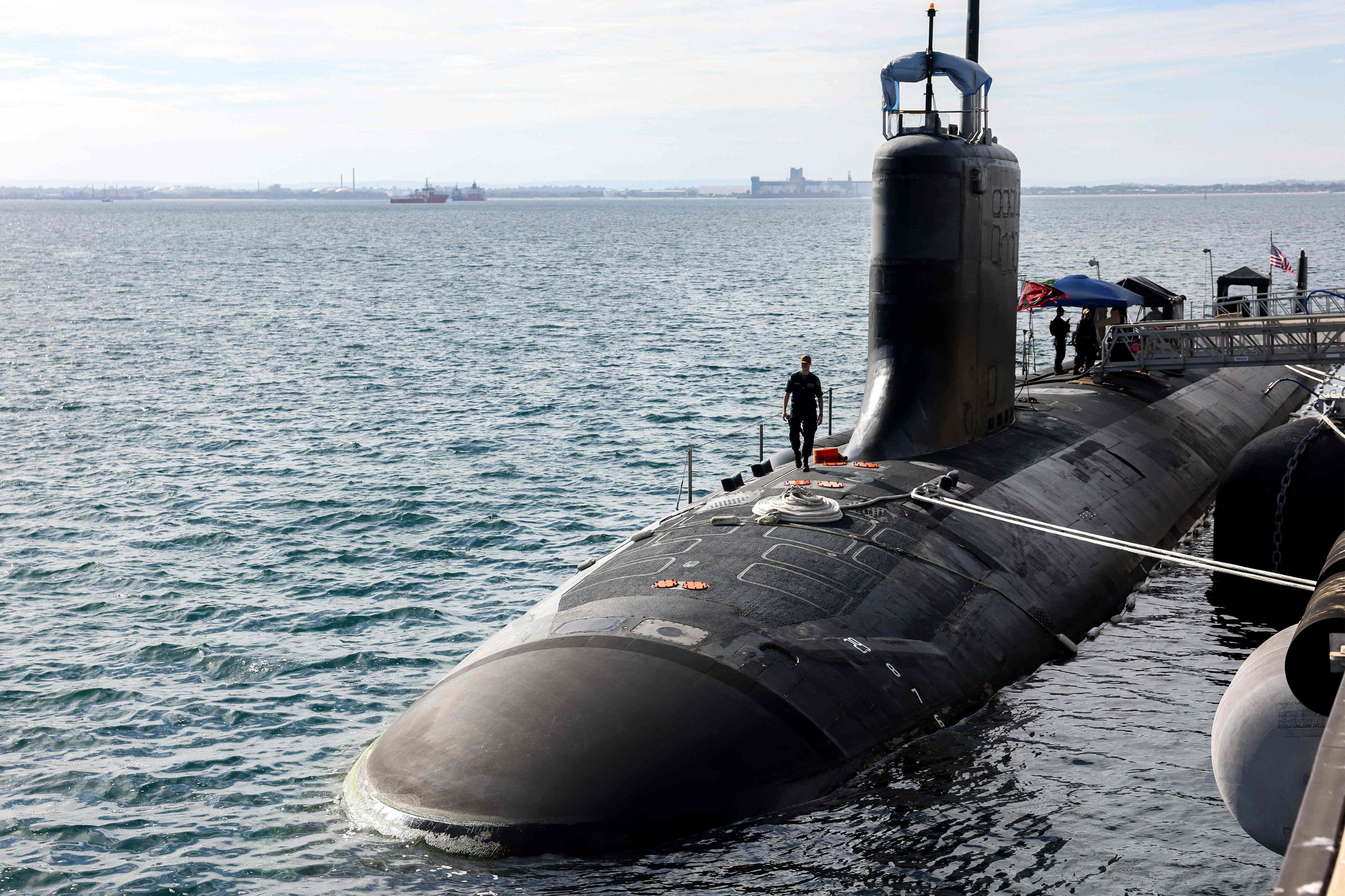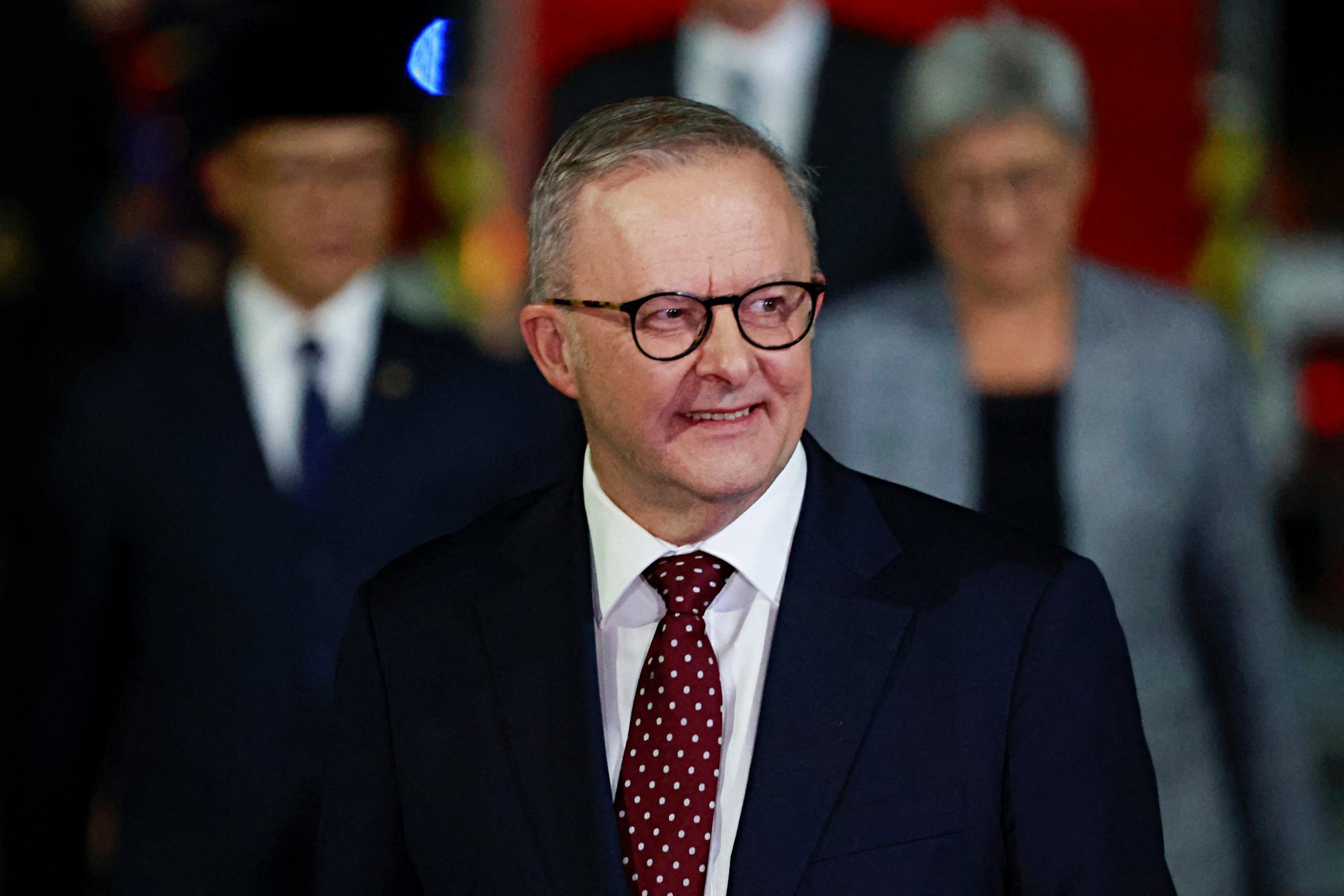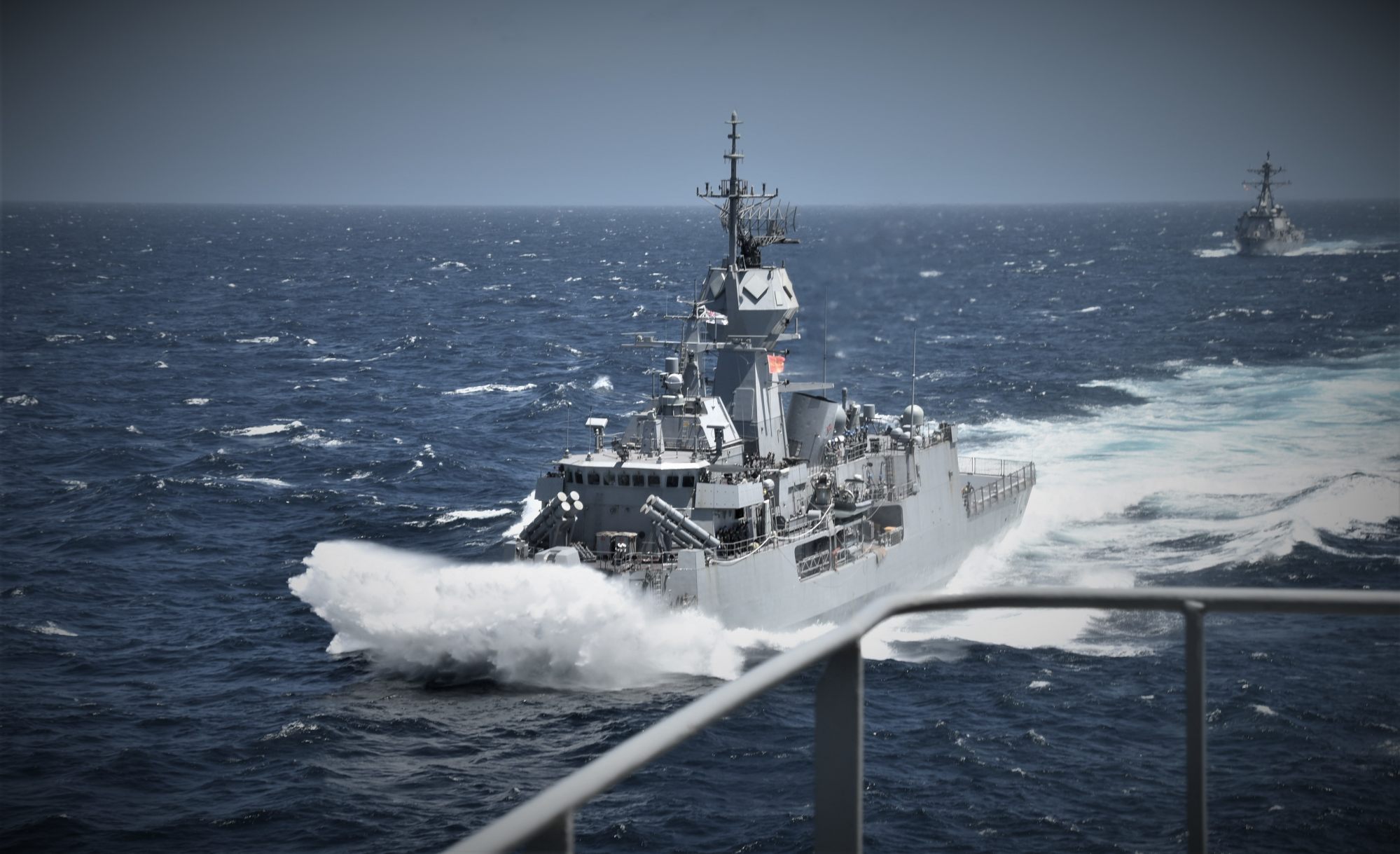‘Cannibalised by Aukus’: is Australia risking its defence for future submarines?
From dwindling munitions to personnel shortages, observers warn Australia’s military is becoming ‘brittle and hollowed out’

Since the end of World War II, Australia has repeatedly revised its defence strategy in anticipation of evolving threats. For more than 15 years, China’s rise has been viewed with growing trepidation, and since 2020, Australians have been warned they face their most precarious strategic outlook for nearly a century.
Yet despite the warnings and numerous white papers, observers say Australia remains alarmingly underprepared for conflict, with the country’s political class often criticised as more fluent in the rhetoric of defence than in its execution. Its military has, meanwhile, suffered from decades of indifference and underinvestment, its population reassured by the long presumed but now uncertain conviction that the United States will come to the country’s aid during a crisis.
On Wednesday, Australian defence chief Admiral David Johnston echoed that alarm. Speaking at a conference on Australia’s preparedness for war, he emphasised the need for increased funding and investment in infrastructure and industry to ensure the country’s resilience in prolonged conflicts.
“We’re now in a position where defence is already spending every dollar allocated to it,” Johnston said, adding that for the first time since the second world war, Australia may soon need to conduct combat operations from its own soil.
Johnston’s comments at the Australian Strategic Policy Institute (ASPI) conference increased already mounting pressure on Prime Minister Anthony Albanese’s government to address decades of indecision that have all but neutered the Australian Defence Force (ADF).

After delivering a combative address at last weekend’s Shangri-La Dialogue in Singapore that cast China as a “real and potentially imminent threat to peace”, US Defence Secretary Pete Hegseth met Australia’s Deputy Prime Minister and Defence Minister Richard Marles.
Hegseth delivered a blunt message to his Australian counterpart: Australia must do more to support the US in the Indo-Pacific and increase defence spending to 3.5 per cent of GDP. “Deterrence doesn’t come on the cheap,” Hegseth said.
The Albanese government has signalled it will increase defence spending from just over 2 per cent to 2.33 per cent of GDP, investing an additional A$5.7 billion (US$3.7 billion) over the next four years and A$50.3 billion over the next decade. An immediate increase to 3.5 per cent of GDP would cost about A$100 billion a year.
ASPI, a widely respected defence think tank, also recommended earlier this year that defence spending be increased to as much as 3.5 per cent of GDP. A report it released ahead of the conference was highly critical of Australia’s defence readiness, warning in particular that existing spending levels jeopardise the country’s ability to acquire nuclear-powered submarines and meet near-term threats.
“A dual strategy of filling short-term gaps while preparing for a secure long-term future is required,” the report said. “Without urgent, coordinated and well-resourced responses to immediate challenges, Australia risks a brittle and hollowed-out defence force.”
The ASPI report also concluded that Australia’s defence has been weakened by bureaucracy and a lack of personnel in the defence and defence industry sectors, with a significant number of experienced senior non-commissioned and mid-level officers leaving the ADF eroding its ability to conduct sustained operations.
The report added that limited munitions stocks, ageing and unhardened defence infrastructure, and inadequate fuel storage capacity are increasing Australia’s vulnerability at a time when warfare technology and tactics are advancing rapidly.
Malcolm Davis, a senior ASPI analyst and contributor to the report, identified readiness, mobilisation, sustainability and resilience as key elements of Australia’s future defence strategy, asserting that capabilities in space, autonomous weaponry, and advanced strike systems should be priority acquisitions.

“Australia’s current defence capability has a complete absence of integrated air and missile defence,” he said. “We have started to get together a command and control system, but we don’t have any missile interceptors to shoot down incoming threats.”
Albanese dismissed both the ASPI report and Hegseth’s critique of Australia’s defence collaboration with the US. But in less than two weeks, he will hold his first face-to-face meeting with US President Donald Trump on the sidelines of a G7 summit in Canada, and both Marles and Defence Industry Minister Pat Conroy were quick to state Australia remained “open to a conversation” on defence spending.
The tension within the alliance comes amid wider trade and foreign policy disruptions to Australia’s relationship with the US, and as fears grow that despite the now A$375 billion projected budget and hundreds of millions of dollars already spent, the Aukus nuclear-powered submarine project may be at risk of faltering due to geopolitical pragmatism.
Peter Layton, a visiting fellow at Griffith University’s Asia Institute, adopted the analogy of the Titanic to describe the project, saying the ADF had collided with the “Aukus iceberg while senior officers are shushing worried passengers, the band continues playing, and the crew remains busy while ‘the good ship defence’ slowly sinks”.
There is a solution, and that is to further increase the defence budgetPeter Layton, geopolitical analyst
He agreed that Aukus is imposing high opportunity costs on the ADF’s capacity to adopt capability options better suited to immediate strategic circumstances. “I think some hard decisions need to be made to address the air force, navy and army’s concerns about being cannibalised by Aukus,” he said. “There is a solution, and that is to further increase the defence budget.”
In Australia, Aukus continues to enjoy broad support for its long-term capacity to deter what is now openly referred to as the Chinese threat to the post-World War II order. However, while Australia possesses its own leverage, by virtue of its geographical location, former senior defence department official Michael Shoebridge pointed out that the prerogative of Aukus rests primarily with the Americans.
He suggested that the Trump administration could renegotiate the Aukus treaty for at least two reasons. First, Trump’s likely belief that he would have struck a better “deal” than the one negotiated by his predecessor, Joe Biden; and second, the difficulties the US faces in meeting its own submarine needs in the coming decade.
A recent analysis of defence budget documents by former defence department official Marcus Hellyer has, meanwhile, revealed that the ADF is struggling to operate effectively with its current annual budget of around A$55 billion. The assessment found air force flying hours are 12 per cent below the scheduled level, largely due to the A$70,000-per-hour operational cost of its F-35 fighters.
The navy’s ageing Anzac-class frigates and Collins-class submarines, its “major combatants” along with its more modern air-warfare destroyers, have seen their scheduled time at sea reduced by roughly 25 per cent. The much-vaunted expansion and modernisation of the navy’s surface combat power will not be completed until the late 2030s.

Meanwhile, the army is undergoing a major restructure in its evolution towards a greater littoral and island-hopping capability, similar in large part to the new mobile strike doctrine adopted by the US Marines. However, successfully implementing these changes will require substantial additional resources.
“During the Cold War, we were spending over 3 per cent of GDP on defence,” Hellyer said. “So if we’re now in a more dangerous and uncertain time, as we are constantly reminded, why are we spending significantly less?”
A poll by the Lowy Institute earlier this year found 83 per cent of Australians believed the US alliance was important to the nation’s security, just below a record high of 87 per cent in 2022.
However, Sam Roggeveen, author of The Echidna Trap, advocates for a more independent and cost-effective defence policy at a time when the reliability of Australia’s primary ally is no longer certain. Roggeveen chose Australia’s native porcupine as a metaphor because it represents no threat to those who mean it no harm, but is “spiky and indigestible” to those who do.
“That is what the Echidna image is all about,” he said. “We need to develop our own capability to shoot down [hostile] aircraft, sink ships and submarines that venture into the air-sea gap to our north. If we develop that capability, we can survive and prosper, even if our great power partner is less reliable and in relative decline against China.”